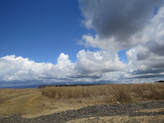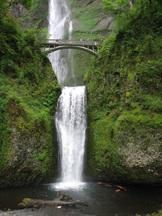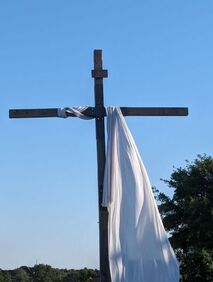 ...Jesus, now Risen ...Jesus, now Risen One of my favorite aspects of Scripture is that no matter how many times a passage is read, each time some new insight becomes evident. Unfortunately, it is all too easy to ‘tune out’ a little when familiar stories are proclaimed during liturgy every year, missing an important opportunity in the process. During the Easter season we already know about the empty tomb, Mary Magdalene, the disciples on the road to Emmaus, and that some of the apostles were slower than others to believe. But if we listen closely, we can enter into the intimacy of each encounter in a new way. For example, we can be with the Eleven as Jesus said, “Peace be with you” and then ate with them, or we can ponder the experience of Thomas the so-called ‘doubter’ in the wonder of touching the wounds of Jesus, now risen.* However, in all the post resurrection passages one person is conspicuously absent: Mary, the Mother of Jesus. She wasn’t mentioned at all, but given her importance to the community, we can safely presume she was there and so perhaps that is why no mention was necessary. 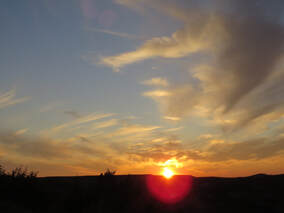 the Gospels were intended to reveal Jesus the Gospels were intended to reveal Jesus We must remember that even though Mary was the most important woman in salvation history, she is mentioned very little in the Gospels. Of those passages, Mary is only recorded as speaking on four occasions: with the angel Gabriel at the Annunciation, at the Visitation when she sang the Magnificat, with the child Jesus when He had stayed behind in Jerusalem, and at the wedding at Cana.** We learn the most about Mary from Luke’s Gospel (and the beginning of the Acts of the Apostles), followed by what John provided in his Gospel. But it is likely that the sparse amount of detail on Mary is because the Gospels were intended to reveal Jesus, how He fulfilled the promises of God, His teaching, and the events of His suffering, death, and Resurrection. Being completely devoted to humble service of God, and also intimately attuned to Jesus, Mary’s role has always been to support Jesus in His mission. Her presence throughout His life was no doubt essential to Him, something we can ponder as we consider how we are called to support His mission according to our call. 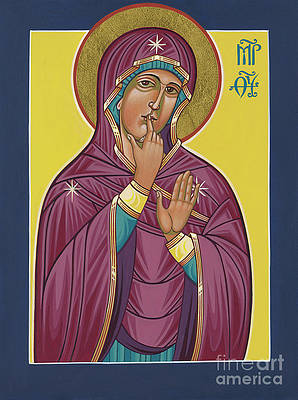 prayerful pondering prayerful pondering We learn much wisdom from Mary, and should seek to imitate her virtues. While her humility and her desire to do God’s will are extremely important, one aspect that we can inadvertently overlook is found within her prayerful pondering: she teaches that listening is often more important than speaking. She was deeply attentive to God throughout her life, seeking Him in prayer especially in the midst of mystery or confusing circumstances. In considering the Annunciation we see that if we are to recognize angels in our midst or recognize the voice of God within our hearts, we have to learn to listen. In our prayer we must be humbly patient, and after greeting the Lord, become silent so that we may hear what He says to us, just as Mary did. It is important to understand that sometimes the encounter is even more intimate if we simply sit together without any words; it is enough to be in God’s presence. Therefore, because Mary was a woman who listened deeply, every recorded word she spoke has great meaning and wisdom, having arisen from a heart steeped in prayer. From her ‘yes’ to the angel through her words at Cana, all she said was filled with the wisdom that comes through prayer. 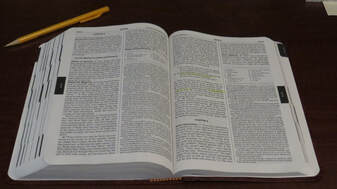 ask the Holy Spirit to reveal wisdom ask the Holy Spirit to reveal wisdom A fruitful reflection would be to take each passage in which Mary spoke and ask the Holy Spirit to reveal the wisdom that is offered. From the Annunciation we could reflect upon learning to better recognize God’s presence, asking for the grace to learn how to spiritually see and hear. We can ask to better live out God’s will, (His desire for all that is best for us), and then for the graces we need to respond freely, “Be it done to me.” The Visitation can teach us how to ‘magnify the Lord’ in word and deed, to ask for the grace to glorify God as often as possible. From the passage about finding Jesus in the Temple we can pray to more readily find God in our daily lives trusting in Him especially in times of loss, confusion, or when it feels as if He is absent. From the wedding at Cana we can ponder how to let go of whatever keeps us from responding to our call to be disciples. Finally, we can meditate upon what must have taken place for Mary on Easter morning; though unrecorded in Scripture, Mary must have been the first person to whom the Risen Jesus appeared since she is His mother. 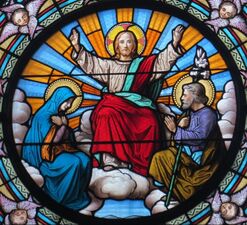 she listened to every word spoken by her Son she listened to every word spoken by her Son The Gospel writers had no need to say any more than they did about Mary because what is recorded provides everything we need to know, and in fact, the Church has taught about her based upon their writing, enhanced by what has been handed down in Tradition. To this day Mary continues the ministry begun during her life: she is our Mother, interceding for each of her children and for the world, always pointing to her Son Jesus. What we know of Mary from the Scripture implies that even when there is no mention of her, she was probably there. When she said nothing, she was listening to every word spoken by her Son, pondering everything, glorifying God by her life, and setting an example so that we might learn to do the same. 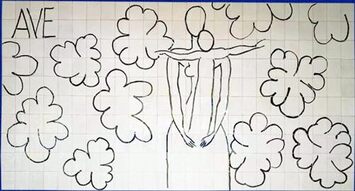 rejoice with our Mother Mary rejoice with our Mother Mary May we read and listen attentively to the Scriptures no matter how familiar we think they are! May we learn how to listen to and ponder that which the Lord reveals daily! And may we rejoice in the Risen Lord with our Mother Mary that we might respond as she did, growing in love and mercy! Let us meet in the Heart of the Risen Lord! Alleluia! Peace! ©Michele L. Catanese Note: There will not be a post on April 29 because I am taking a 'blog holiday,' that is, a rest from writing for a couple of weeks. The next post will be on May 6. See you then! * The passages to which I am referencing are specifically found in Luke 24:1-35 and John 20: 1-29, but you can also see Matthew 28 and Mark 16. By the way, I described Thomas as the ‘so-called doubter’ because he is often depicted as being very faith-filled throughout the Gospel of John and so I think it is unfair to label him for displaying the very thing, if we are honest, many of us would have done had we been in his situation. Besides, the other resurrection accounts say he was not the only one who struggled. I have great love for Thomas the apostle because of his transparency and for admitting his belief with the declaration, “My Lord and my God!” ** The Annunciation, Luke 1:26-38; The Visitation, Luke 1:46-56; finding Jesus in the Temple, Luke 2:41-52, the wedding at Cana, John 2:1-11. Images: 1. My photo; Resurrection Cross with Burial Cloth. 2. My photo; sunset in the Badlands, South Dakota. 3. Icon; Our Lady of Silence by Fr. William Hart McNichols. You can find this icon at https://fineartamerica.com/featured/our-lady-of-silence-william-hart-mcnichols.html 4. My photo; Bible. 5. My photo of stained glass: Triumphant Jesus with Mary and Joseph at cathedral in Lugano, Switzerland. 6. Painting; Ave, by Henri Matisse at the Chapel of the Rosary in Vence, France. Note: In compliance with GDPR rules, I wish to make it clear that I do not gather any information on any of my readers at any time.
1 Comment
 On that first Easter morning there was tremendous rejoicing in Heaven as the Son of God, Jesus Christ, arose from the dead. His Resurrection brought clarity and truth: Alleluia! He is Risen! There is no doubt of the victory! However, for the apostles it was not so; for them the day began with deep sorrow and incredible confusion. They were troubled, frightened, unsure of what to do next. Despite this, Mary Magdalene left her home and headed for the tomb to anoint the body of Jesus whom she believed to be lying there. (John 20:1-18) She had been at the cross, had witnessed His last breath, and was there as His body was taken from the cross and laid in the tomb. So when she got there and found the tomb open and empty, it must have been quite startling; she may have felt this was yet one more indignity leveled at Jesus, adding another layer of grief upon her soul. But suddenly someone was there. (The gardener, perhaps?)* Through her tears she could not see distinctly, but when He said her name, “Mary,” she instantly recognized Jesus and proclaimed, “Rabboni!” In one moment everything became clear; even if she did not have understanding of the mystery, her heart was full. That one word she uttered was so steeped in joy and love that it was all she needed to say: Rabboni! 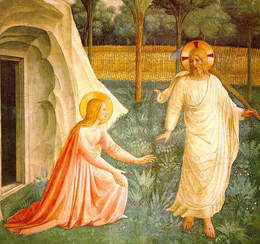 In the interchange between Mary Magdalene and Jesus, there were two pivotal moments. The first was in Jesus saying her name, revealing an intimacy on both the human and divine level.** The second was even more important, however. After they greeted each other, Mary embraced Jesus in some way and Jesus said, “Do not hold me, for I have not yet ascended to the Father….” Jesus indicated that He was still in the process of Resurrection and it was not yet complete. There seems to be deeper truth revealed in His strange refusal to be touched in that moment: we have to let go of what we have, sometimes our deepest loves, in order for something greater to transpire. Holding on thwarts the process and keeps it from being completed. It takes the most profound level of trust to let go in this way. It is not only what Jesus was teaching, but it is also what He is asking of us. 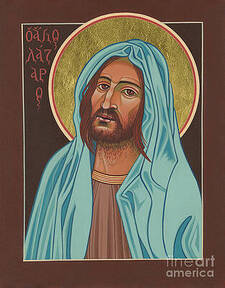 Just as many have suffered losses through death, our family lost a dear loved one just prior to Holy Week. It made no sense, as death often does not, but difficult as it is to lose someone who is beloved, it has been clear that the Lord is present. In the midst of everything, including grief, is a lesson from the Lord who also knew what it was like to lose a loved one. Remember, Jesus experienced the loss of His foster father, Joseph; He also lost His dear friend Lazarus, (John 11), something so shocking and so difficult for Jesus that He wept openly. He must have entered into mourning on many occasions which are simply not recorded in Scripture. As His mission progressed, Jesus had to let go of everything to the point of giving up His life in order that we might live. He preached numerous times about not clinging to things, such as when He told the rich young man to sell all he had in order to follow Him. Unfortunately the young man was unable to do so, failing to understand that Jesus was not speaking specifically of his assets, but his attachments, everything and everyone whom he put before God.  Trusting God when we lose a loved one, however, is the most difficult thing we are ever faced with. The pain does not ever go away, though it transforms, (and it transforms us), as we learn how to coexist with it through faith and prayer. What we learn from the encounter of Jesus and Mary Magdalene is that we must let go so that greater things can happen. It is not like Mary Magdalene's clinging to Jesus would have stopped His resurrection; even death could not do that! But what it would have prevented is a more profound acceptance of mystery and love that she could only enable if she let go. That is, Jesus had to ascend to Heaven to complete something greater than had already begun. So, too, do we have to allow that ‘something greater,’ profound mystery that is only accomplished by our letting go. God’s wisdom and ways are so beyond ours that in saying “Do not cling to me,” Jesus is asking for our trust in Him and in the promise that one day all will be revealed. His act of infinite love desires, and perhaps longs for, our response of profound love in return. Only by joining the wounds in our heart with the wounds He bore in His hands, feet, and side, will they be transformed into the strength of new life only He can give. 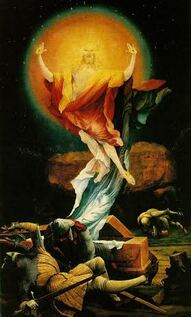 This Easter let us rejoice in the Resurrection no matter what confusion we bring to the tomb. Let us allow Jesus to be present in His glory, and for His love to illuminate our faith so that we can be comforted after whatever experiences life has put upon us. We will continue to struggle through whatever comes our way on our journey, but we know without a doubt that He is Risen, that everything in this life is mystery, that we will one day enter into eternal life where all will be explained, and that Jesus is ever offering His presence, His grace, and His mysterious, unfathomable love. As Jesus says our name, in response let us cry out, “Rabboni!” 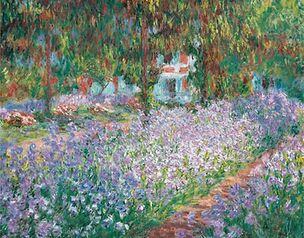 May we offer our love freely, unabashedly, and abundantly! May we rejoice in our Risen Lord, glorifying Him by our lives! And may it be obvious to others that we are Jesus’ disciples, people of the Resurrection! Let us meet rejoicing at the empty tomb! Alleluia! Peace! ©Michele L. Catanese Dedicated to our cousin Seth, with love. * To be clear, I have condensed the passage about Mary Magdalene going to the tomb because of the point I was trying to make, which is the theme of this entry. In John 20:1-18 Mary first sees the empty tomb and runs to find Peter and John without entering it herself. She remained at the tomb after they went inside, saw it was empty and then left to tell the other apostles. It was at that point that she encountered two angels who inquired why she was weeping. As she replied to them, Jesus came to her in the interchange I highlighted. Please do meditate upon this passage. It is deeply moving and profound. ** Regarding the first pivotal moment in this passage, as both human and divine Jesus loved Mary Magdalene in both ways: He loved her as His friend in an authentically human way, but He also loved her divinely, with a love beyond comprehension because He was her God. In this passage the two ‘levels’ of love are expressed in one word: “Mary.” Mary’s response, “Rabboni,” revealed love that was quite different from the love of Jesus, but profoundly love nonetheless. Her love was only of human origin, but with two ‘dimensions:’ she loved Jesus as dear friend, but also as her God. Our love for God and His for us is actually the exact same as that of Jesus for Mary Magdalene, and hers for Him. Images: 1. My photo; Sunrise at Port Aransas, Texas. 2. Fresco Painting; Nolo Mi Tangere, by Blessed Fra Angelico (1425-1430) 3. Icon; St. Lazarus of Bethany, by Fr. William Hart McNichols. You can find this at https://fineartamerica.com/featured/st-lazarus-of-bethany-william-hart-mcnichols.html 4. My photo; Pelican in Flight. This was taken at a pond near my home. I love pelicans; they are the most graceful birds when they are in flight. But they are also a Christian symbol since they will feed their young on their own blood if they cannot find food, just as Jesus gave His body and blood to give us life. 5. Painting; Resurrection, by Matthias Grünewald. (1512-1516) This is a panel on the Isenheim Altarpiece. For an interesting article on this work of masterful piece of artwork, go to https://www.kellybagdanov.com/2021/03/31/grunewalds-resurrection-from-the-isenheim-altarpiece/ 6. Watercolor painting; The Garden in Giverny, (Jardin de l'artiste à Giverny) by Claude Monet. (1900) Note: In compliance with GDPR rules, I wish to make it clear that I do not gather any information on any of my readers at any time. 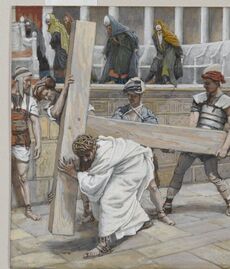 to assist Him to assist Him We have arrived at the most difficult part of Lent, having already spent 5 weeks working at abstinence, prayer, and almsgiving. As the days of Holy Week draw near we may feel like our commitments have become an increasingly difficult struggle, perhaps because we are tiring, just as Jesus must have tired in the desert when He was tempted, and as He most certainly was when He was beaten down and carrying the cross. Beginning with Passion Sunday, Holy Week calls us deeper into the Way of the Cross, to accompany Jesus every painful step of the way to Golgotha. An appropriate place to begin this process anew, (or perhaps more profoundly), is to go further than simply walking with Him, but to help Him; that is, to assist Him in carrying His cross. We should recall that Jesus told His followers that we must pick up our cross and follow Him; therefore, through our prayerful meditation, we might understand what that means more clearly by becoming as Simon of Cyrene, assisting the Lord under the cruel burden laid upon His shoulders.  the path is narrow and few are able to travel it the path is narrow and few are able to travel it Picking up our cross is about more than simply accepting our suffering, but it is also about embracing the mission to which we are called. As disciples we are called to help spread the gospel taught by Jesus, assisting in the work of building the Kingdom; that is, to evangelization through word and deed, living the gospel message through acts of humble service, and works of mercy. To pick up our cross is to fight the spiritual battle that is being waged against us, to recognize it and to actively fight divisiveness and the values of the world. The battle is not just in society, but it is personal because the evil one wants to attack each of us at our weakest points so that we stumble and fall; he will go for our wounds and exploit them, attempting to convince us that his path is easier than the path of Jesus. In short, he does not want us to follow the way of Jesus, planting the temptation that it is too difficult and that he offers a better, easier way. Jesus said the path is narrow and few are able to travel it. We can see that the path He took to the Cross was the narrowest of all because of the terrible suffering and attack on every side. Indeed, by helping Jesus carry His cross we learn how to carry our own, and we also fight the power of evil.  we will be challenged to stay awake we will be challenged to stay awake Therefore, we are called to move forward toward the Cross of Jesus, not away. Throughout their time with Jesus, the apostles continually struggled to understand this, so if we are having difficulty, we are not alone. Nonetheless, it is important that we be present during His agony in the Garden of Gethsemane, even though we will be challenged to remain awake. If we stay alert and attentive we will observe the horrible struggle Jesus endured that was so intense He sweat blood, but yet by the end of it, He freely chose the Father’s will. When the betrayal and arrest took place, all of the apostles scattered, running away from the danger and not toward where Jesus was taken; except one, (John), no one followed Him to the foot of the cross. How easy it is to run away rather than toward suffering; therefore, we must remember to pray to the Holy Spirit for the graces we need, especially those of discernment, courage, and perseverance through temptations, attacks, and the consequent suffering that we may experience.  ...to be washed in the blood of Jesus ...to be washed in the blood of Jesus Jesus asked for our presence in the Garden when He begged, “Remain here, and watch with me.” (Matthew 26:38) He wants us to go with Him all the way to the cross: when Jesus is before the Sanhedrin and then Pontius Pilate, and is scourged, beaten, crowned with thorns, and finally given His cross to carry, He wants us with Him not just to comfort Him, but so that we might understand more fully that as we labor under our crosses, He unites Himself to us. As He carries His cross, Jesus continues to teach and minister to His disciples. We must be like Simon of Cyrene, assisting the Lord on the way to Calvary. It is unclear if Simon was forced to carry the cross or if he chose to do it, but we can be sure that at the end of his journey to Calvary with Jesus, no matter what he was like before, Simon was transformed. He came into direct contact with the blood of Jesus; it is not mentioned in the gospels, but there is no way he could have carried the crossbeam, first shouldered by so bloodied a man as Jesus, and not have gotten some of His blood on him. Therefore, Simon is the first to be ‘washed’ in the blood of Jesus, something we are also invited to do.* An interesting point to ponder is that St. Padre Pio, who bore the wounds of Christ (stigmata), said that the wound which caused Jesus the most pain, (and did so for him, too), was the hidden wound on His shoulder which was caused by the weight of the cross as He carried it. As we carry our hidden crosses, let us join with Simon, uniting our labors with Jesus, so that we, too, may be washed in His blood and therefore grow in purity and holiness. 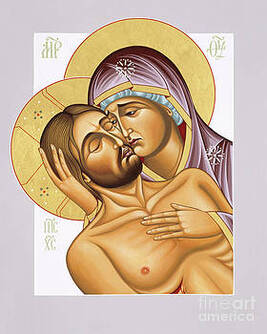 attending to the Lord attending to the Lord May we become more aware of the ways we are tempted to run from our crosses and instead embrace them! May we become more resolute in attending to the Lord as He thirsts for those who are His children but who do not believe! And may we take up the Cross of Jesus as Simon did, to be washed in the blood of the Lamb so that on the last day we will share in His victory! Let us meet at the Cross of Jesus! Peace! ©Michele L. Catanese Note: I suggest meditating in the way taught by St. Ignatius of Loyola in which we enter into the scene as we read the passage and then pray with it. St. Ignatius encouraged the prayerful process of letting the Lord use our imagination and senses to see, hear, feel, and touch that which is going on in the scene. Since God is the Lord of time and space, we are there spiritually and therefore we can gain insights into the events. I also encourage meditating on the Sorrowful Mysteries of the Rosary in this manner. * In the NABRE version of the Bible the footnote to Matthew 5:41 says: “Roman garrisons in Palestine had the right to requisition the property and services of the native population.” Simon was from Cyrene which was in North Africa, and so he may have been a visitor, but he was a Jew. The footnote to Matthew 27:32 says: “Cyrenaica was a Roman province on the north coast of Africa and Cyrene was its capital city. The city had a large population of Greek-speaking Jews. Simon may have been living in Palestine or have come there for the Passover as a pilgrim.” -Also, the film Ben Hur (1959) deals with the power of the blood of Jesus in the crucifixion scene when Ben Hur’s mother and sister, afflicted with terrible leprosy, are cleansed by the blood of Jesus which ran from the Cross to where they were. It is an incredibly moving scene and affects Ben Hur’s conversion from a man of anger and vengeance, to a man of faith and forgiveness. (Full disclosure: Though it is a work of historical fiction, Ben Hur is my favorite biblical movie, if not my favorite film of all time.) Images: 1. Painting; Simon Helps Jesus Carry the Cross, by James Tissot. 2. My photo; Easy Road. This path is by the ski lift on the slopes of Copper Mountain, Copper, Colorado. 3. Painting; Agony in the Garden, by Andrea Mantegna, 1460. 4. Icon; La Sangre de Cristo, by Fr. William Hart McNichols. You can find this at https://fineartamerica.com/featured/la-sangre-de-cristo-242-william-hart-mcnichols.html 5. Icon; Our Lady of Magadan, by Fr. William Hart McNichols. It seems most appropriate to remember that Mary was with her Son the entire Way of the Cross. You can find this icon at https://fineartamerica.com/featured/our-lady-of-magadan-056-william-hart-mcnichols.html Note: In compliance with GDPR rules, I wish to make it clear that I do not gather any information on any of my readers at any time. 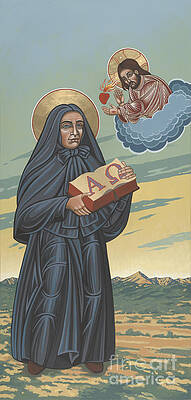 Given the film about her which was just released, it seems timely to highlight St. Frances Xavier Cabrini, (1850-1917) the first US citizen to be canonized. She was born and raised in northern Italy, and came to America in 1889 in order to build and operate hospitals, schools, and orphanages for the poor Italian immigrants in New York City. During her life of service she built 67 such institutions in Europe, the United States, and South America, run by the Sisters in the congregation she founded, the Missionaries of the Sacred Heart of Jesus. Although she loved Italy, she decided to become a US citizen and spent much of her time administrating her congregation, while tirelessly working to make sure the needs of the poor were met. Now as it was then, many immigrants are among the poor, and the need for assistance is great. Therefore, we need someone like Mother Cabrini today!  I first became acquainted with Mother Cabrini when I was a teenager.* She came into my life through a remarkable woman named Joan who belonged to our parish church and had become a friend of my mother. Joan was elderly by the time I met her, but as I grew to know her I learned that she had led a fascinating life and it was obvious she had never lost her ‘joie de vivre.' Convention did not seem make a difference to her and it appeared that she did what her heart led her to do. But the truth of her heart was that it was given totally to Christ. Joan went to Mass every day, possessed of a humble servant’s heart attuned entirely to the Lord. By the time I met her she had slowed down quite a bit, but continued to serve through a ministry of many hours in prayer for others. However, what makes Joan even more remarkable is something that took place when she was only 2 or 3 years old: she was cured of a life-threatening illness as a result of the intercession of St. Frances Xavier Cabrini. Joan suffered kidney failure due to an illness, and near death, the doctors told her parents there was no hope. Some Sisters from the Missionaries of the Sacred Heart brought Joan's parents Mother Cabrini's crucifix,** and let them have it overnight. They placed the crucifix on Joan's body and prayed for the intercession of Mother Cabrini for the healing of their daughter. The next morning not only was Joan still alive, but when the doctors examined her later, she was found to be totally healed. Joan lived into her early 90's, and while in her older age she had other health issues, her kidneys were never one of them! Joan was an inspiration to many who knew her, an example of how to live a life with enthusiasm and gratitude, a response which no doubt came from receiving such a great gift as the healing she experienced as a small child. 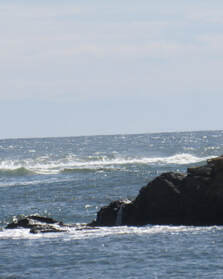 Just before I entered religious life, Joan brought that same crucifix to my parent’s house so we could pray with it. (The Sisters had given it to her after her miraculous healing.) We had it for one day, keeping it overnight. I remember feeling Mother Cabrini's closeness as I prayed with her cross. I was not expecting any miracles, but it made me realize that all it takes is the openness of faith to recognize when we are in the presence of something that conveys the sacred. The cross was not a good luck charm and had no power of its own. But what was important was the connection to this holy woman and the belief that she could intercede through her prayer, not by power of her own, but through the power of God who hears the cries of the poor and the prayers of His faithful servants. Anyone can intercede for someone who is in need; one need not be a canonized saint to pray in this way. We can pray for the dead and we can also pray to them asking for their intercession in the same way we might ask the living to pray for our needs. Most of us do this quite often when we ask a friend to pray for us or when we pray for the needs of our church and the world when we are at worship in our faith communities. The world is in great need of our intercessory prayer.  Mother Cabrini is important not simply because of miraculous experiences such as the one I have mentioned. She is important because she teaches us about the great courage it took first to found a congregation and then to leave her homeland and cross the ocean at the cost of great discomfort and danger. She teaches us about the patience and fortitude it took to minister to the poor immigrants who had next to nothing, did not speak the language yet, and were (mis)treated with horrifying disdain. She had to raise money, get the right builders, and staff the hospitals, orphanages, and schools with Sisters. She tirelessly traveled to other cities in the United States and then to other countries establishing hospitals and orphanages, able to do all of it as a response of love to God who called and gifted her so she could do it. Although there were many obstacles that Mother Cabrini had to overcome, including the poor health she endured most of her life, she was determined not to let anything stand in her way. This is what faith in God can do.  Mother Cabrini should inspire us to spend time in prayer and to the action born of prayer as our response to God. We do not have to go to exotic lands, but we can open our hearts to the poor in our own towns and cities. There are so many people suffering from the effects of poverty or natural disasters; there are many suffering from unemployment or under-employment; there are many suffering from illness or loneliness due to being home-bound; there are many who are struggling to feed families; there are many who are homeless; there are many veterans who were wounded visibly or invisibly who are struggling to integrate into life back at home; there are needs all around us to which we can respond. This is what Mother Cabrini inspires and challenges us to do: to hear the call of the suffering and do what we can to alleviate it. Nothing is too small when it is a gesture of love for the poor.  May we be inspired with the courage of St. Frances Xavier Cabrini to reach out to those in need! May we be moved to pray in intercession for the needs of our communities, our nation, and our world! May we be filled with gratitude for the many blessings we have, especially the small ones we often overlook! And may we be filled with love for all our neighbors, stranger and friend alike, just as Jesus taught! Let us continue to meet in the Heart of our loving Savior! Peace! ©Michele L Catanese NOTE: This is a revision of one of my earliest entries, posted in November 2012 for the feast day of Mother Cabrini. * I did know a little about St. Frances Cabrini before I met Joan because my paternal grandfather did volunteer work in one of the hospitals she had founded. He was given a small relic containing a piece of her veil at the end of his service there. I was given that relic after he died. ** Women and men in religious orders are given a crucifix when they enter their community. When I was in religious life, we referred to it as our bed crucifix since we placed it on our bed during the day. It is usually buried with the Religious. The one that was given to Joan was the ‘bed cross’ that belonged to Mother Cabrini. It was not the cross she wore. Images: (most were added to this revision) 1. Icon; St. Mother Cabrini Missionary of the Sacred Heart, by Fr. William Hart McNichols. You can find this at https://fineartamerica.com/featured/st-mother-cabrini-missionary-of-the-sacred-heart-209-william-hart-mcnichols.html 2. Photo; St. (Mother) Frances Xavier Cabrini. This seems to have been an official photo of her belonging to her community. 3. My photo; the Atlantic Ocean off the coast of Maine. The ocean has always evoked the sacred for me. 4. My photo; Shrine of St. Francis Xavier Cabrini in Golden, Colorado. 5. Painting; Works of Mercy, Give Drink to the Thirsty, Welcome the Stranger, by Olivuccio di Ciccarello. 6. My photo: relic of Mother Cabrini (a piece of her bone) at the foot of a statue of her. This was taken at the Shrine in Golden, Colorado. Note: In compliance with GDPR rules, I wish to make it clear that I do not gather any information on any of my readers at any time. 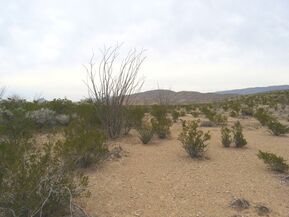 to go with Jesus into the desert to go with Jesus into the desert I have enjoyed the desert every time I have visited or have hiked in such an area. Indeed, there is a lot of beauty in a desert, but it is also a place that is rather inhospitable for human life. To survive for a long period of time a person would need a reliable and plentiful source of water and food as well as some shelter from the elements. Though we know all this, it is important to keep this image in mind as we reflect upon the invitation to go with Jesus into the desert during this season of Lent. His 40 days and nights in the desert prior to ministry were an essential preparation for Him, and it is good to observe what He did by accompanying Him. We know Jesus went into the desert to pray, but it was far more intense than we can imagine because of the level of spiritual warfare in which He engaged. We can learn a tremendous amount from His experience that will aid us in the battles we face, too. 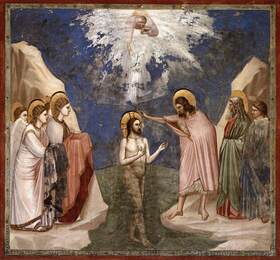 "... with you I am well pleased." "... with you I am well pleased." The Gospels state that immediately before Jesus left for the desert He was baptized by John in the Jordan River. As Jesus came up from the water a voice was heard by those gathered there. Pay attention to exactly what the Father said: “You are my beloved Son; with you I am well pleased.” (Mark 1:11, italics mine) This was a personal message for Jesus, a word from Father to Son, telling Jesus that what had transpired for the previous 30 years was pleasing to Him, but now the time had come for Jesus to undergo the final and most intense preparation for what lay ahead. The Gospel says, “At once the Spirit drove Him out into the desert.” (Mark 1:12) There seems to be a sense of urgency in this, and while the Holy Spirit could have sent Jesus anywhere, the desert location must have had great purpose and meaning.  trusting in God who sent us there trusting in God who sent us there That Jesus was driven there “at once” indicates He did not go home and get His ‘desert gear,’ but rather He brought nothing with Him into that wilderness. In these first weeks of Lent we have entered the desert as Jesus did, and we, too, need to ‘leave behind’ that from which we are fasting, trusting in God who sent us there; we have begun and now we need to stay the course. In the desert, with abstinence and prayer one learns to recognize attachments to people, places, and things, everything that we have put before God. We may also have to face the most difficult temptations that involve memories and sins from the past which the devil uses to taunt and demoralize us. And though it is early Lent, some might have already been tempted to give up and ‘return home’ because either we think we have failed or to avoid the discomfort of the work needed for our growth in freedom and love of God. 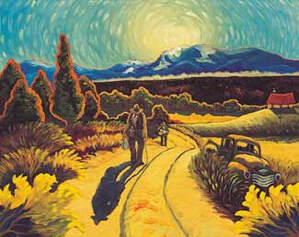 taking the narrow path taking the narrow path The devil is pretty slick, and we can expect he will try similar tactics as those he employed on Jesus, aiming for our human weaknesses with trickery and lies. In the Gospels three main areas of attack were described.* First was the temptation to let the devil take care of Jesus’ hunger, (desires). To combat our hungers we must put our spiritual life before material desires, making sacrifices in which we put others before ourselves through acts of mercy and service. Next was the temptation concerning His safety, which may have actually served to prepare Jesus for the terrible temptations He would face during His Passion. This teaches us to never give into fear of expressing our faith and commitment as Christians: we are to live our faith boldly, without fear or apology. Lastly was the temptation to gain ‘easy’ power by following satan instead of God. This is most important for us since it teaches that we must always discern wisely whom we are choosing to follow, taking the narrow path and not the wide one. 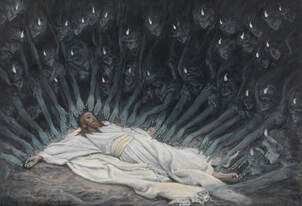 ... to become stronger ... to become stronger We need this Lenten trip to the desert, perhaps now more than ever since attack upon those who are committed followers of Jesus is becoming more intense. Our Lenten practices will help us to recognize the tactics of the devil more clearly so we can rebuke them, ask forgiveness, become stronger in the ability to utilize the graces we have received, and grow in our love and commitment to God. The enemy is trying to 'divide and conquer,' to cause our morals to deteriorate, enticing us into becoming more accepting of that which is against the gospel, and to live in fear of repercussion, to keep us from taking a stand in defense of our faith. In short, the tempter is trying to get us to see what is evil as good and what is good as evil. He is dividing our families, our communities, and our churches by attacking their foundations, using us to do so. 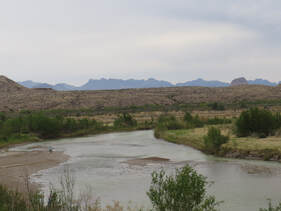 Jesus was thirsting for people to come ever closer to Him Jesus was thirsting for people to come ever closer to Him The desert can be difficult, but it is necessary for us to accompany the Lord. On the cross Jesus said, “I thirst.” He was not asking for His bodily needs to be met but rather, Jesus was thirsting for His people to come ever closer to Him. He thirsted for those who will stay the course, following Him the entire way to the Cross and then to the glory which awaits. To do so, we must be vigilant, use what God has given, and never give up hope. The good news is that the desert is also a place of life: God’s grace will see us through if we trust Him. May we call upon the Holy Spirit for the graces needed to overcome temptation and all that seeks our ruin! May we have no fear of the desert or of spiritual warfare! And may we have the fortitude to stay the course of our journey this Lent! Let us meet in prayer, assisting one another! Peace! ©Michele L. Catanese * These suggestions about the three main areas of temptation experienced by Jesus are not exhaustive and they are only meant for spiritual reflection. There are better, more precise explanations in the exegesis of many spiritual writers and theologians. Images: 1. My photo; Big Bend National Park, west Texas. 2. Fresco painting; The Baptism of Jesus, by Giotto, from the Scrovegni Chapel, Ravenna, Italy. 3. Icon; Nuestro Salvador de las Sandias, by Fr. William Hart McNichols. I chose this for two reasons: first, it depicts Jesus in the desert with the Sandia Mts. in the background, and second, because it is a sign of hope and victory. If you are interested in purchasing a copy of this in one of many mediums go to fineartamerica.com/featured/nuestro-salvador-de-las-sandias-012-william-hart-mcnichols.html 4. Painting; The Long Walk Home by Ed Sandoval. (This is actually my photo of a print I have of this painting.) 5. Painting; And the Angels Ministered Unto Him by James Tissot. Again, thre is always hope: the Lord will make sure we are cared for if we remain faithful, sending angels to our aid. 6. My photo; a creek which runs through Big Bend National Park, TX. Note: In compliance with GDPR rules, I wish to make it clear that I do not gather any information on any of my readers at any time. 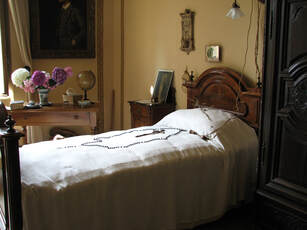 humility is expressed in selflessness and a life of service humility is expressed in selflessness and a life of service I am sure many people could say that at some point in their life they have met someone who is obviously holy. I know I have, several times. As Lent begins, it would be good to reflect on what habits or characteristics (virtues) a holy person typically possesses that might kindle a desire within our hearts to grow in those areas also. Of these, humility is the trait which seems to be a shared characteristic among all the saints, (those canonized and those who remain hidden but for our experience of them). Their humility is expressed in selflessness and a life of service which seems to flow naturally. However, their humility is rooted in a life of prayer which builds up an intimate relationship with God from whom all graces flow. Therefore, it is clear that if we desire to grow in holiness we need to foster a relationship with God; the more our relationship grows, the more His love and mercy are received, and the more these are received, the greater our love of Him becomes. What we notice in holy people is that they love the Lord so much that as a response humble actions of love and mercy are offered freely to those they encounter. No matter what hardships or suffering they might endure, they continue to do all they can to make God known and loved, building up the Body of Christ, the Church. 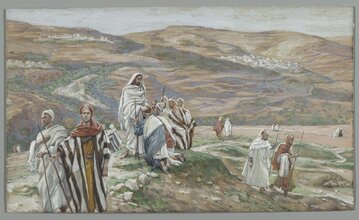 the Kingdom of Heaven is at hand the Kingdom of Heaven is at hand The great theologian Hans Urs von Balthasar once said, “The saints are those who disappear into the mission of the Church.” This disappearing is an act of aligning themselves completely with what Jesus taught and the apostles built upon. Von Balthasar was referring to the action of a humble heart; ‘disappearing’ is not the obliteration of one’s sense of self, but rather a becoming one with the mission Jesus gave His first disciples. He told them to go to the towns of Israel with a simple message, “The Kingdom of Heaven is at hand,” but His emphasis was on curing the sick, raising the dead, cleansing lepers, and driving out demons. (Matthew 10:6-8) In other words, He wanted them to speak less and act more. Jesus was aware that people were in need of teaching, but He also knew that it is authenticity in actions, (living what we profess), that makes the deepest impression. Therefore, if we live the gospel message in humility, those whom we serve, even with simple acts of kindness, will eventually want to know more about the One we follow. We can be as eloquent as St. Paul, but if our words do not match our deeds, it will not make much of a difference.* 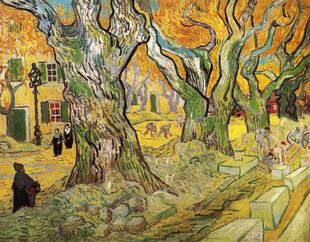 humility...enables one to love without judgment of the other humility...enables one to love without judgment of the other Unfortunately, many people do not understand what humility is really about. True humility is not self-deprecation, and so ‘disappearing’ does not mean we are to see ourselves as unimportant; rather, the true humility we seek is to know who we are, acknowledging this reality with gratitude to God. If we are fully grounded in knowledge of ourselves, our weaknesses and strengths, sinful tendencies and giftedness, errors and successes, recognizing who we are before God and trying to live in accord with His will, then we are humble. The humble are full of gratitude which arises from acceptance of the mercy God offers; as sinners they know that they do not deserve it, but they accept it gladly as gift of love from God. This knowledge enables them to see those who may be struggling with life, perhaps with addictions, bad habits, loss of faith, or who are treated as outcasts, reaching out to them in love, accepting them as brothers and sisters. The wonderful thing about humility is that it enables one to love without judgment of the other and to see beyond exterior characteristics and society’s labels. In other words, it enables them to see as Jesus sees and therefore to love as He loves, too. 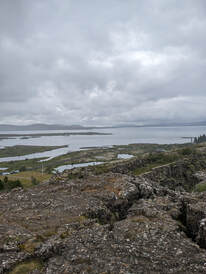 the poverty of our heart the poverty of our heart An integral aspect of true humility is the recognition that in truth we have absolutely nothing to offer God that He does not already have, except for one thing: the poverty of our heart offered in love to Him. And the offer of our heart to Him is all God really desires. God will fill our battered and broken heart with His grace and therefore we will be moved to make a response of love and gratitude. This process is enabled through prayer (especially with Scripture), repentance, fasting, and abstinence. Especially beneficial is time spent meditating upon the freely chosen suffering of Jesus during His Passion, meditating on the immensity of the love we don’t deserve, but receive anyway as His gift of unfathomable, limitless mercy. And of course, these are the practices the Church emphasizes during the season of Lent. They enable us to enter into His suffering, to repent for our part in it, and assist our growth in holiness through increased understanding of God’s love and mercy. Finally, if there is one thing that the saints universally offer it is this rather simple ‘formula’ for holiness: to humbly love Jesus and Mary as much as we can. Mary is the perfect model of humility who always points us to her Son whom she loves with the purest love there is. When we love them as much as possible it will move us to always seek to please them, and therefore, to act with humility in holiness. Thus, with grace our focus will be greater than disappearing into the mission of the Church, but rather, our desire will be to disappear into the very heart of Christ. 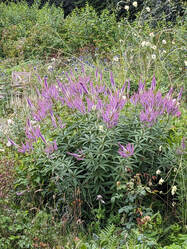 may we seek to grow in humility may we seek to grow in humility May we desire to grow in humility as a loving response to God! May we seek to become one with the mission of the Church, the Body of Christ! And may we seek to love Jesus and Mary more and more so that in loving them, we ‘preach,’ and therefore share, this love with others! Let us meet in the Heart of Jesus! Peace! ©Michele L. Catanese *A good example is found in the Gospel of John when Jesus healed the man born blind in Jerusalem. A short while after the encounter the man sought Jesus out and subsequently professed his faith: “I do believe, Lord!” (John 9:37-39) In this case it was the mercy of Jesus that built up his faith; it was the action of mercy, rather than words. “You should above all insist on what is the foundation of the Christian sanctity and the foundation of kindness: on the virtue from which our divine Teacher and our angelic Father proposed to us as models. I am talking about humility: internal and external humility, more internal than external, more by living it than shown, more profound than visible.” Letter of Padre Pio, August 19th, 1918, to Fr Gerardo da Deliceto Images: 1. My photo; the bed of Blessed Pier Giorgio Frassati, taken in Pollone, Italy. 2. Painting; He Sent Them Out Two by Two, by James Tissot. For more: https://www.brooklynmuseum.org/opencollection/objects/4517 3. Painting; The Road Menders, by Vincent van Gogh. 4. My photo; view in Iceland, near Reykjavik. 5. Icon; The Three Handed Mother of God, by Fr. William Hart McNichols. To obtain a copy of this icon in one of many mediums, go to https://fineartamerica.com/featured/the-three-handed-mother-of-god-102-william-hart-mcnichols.html For an explanation of the significance of why Mary is written with three hands in this icon, go to www.oca.org/saints/lives/2017/06/28/101839-icon-of-the-mother-of-god-of-the-three-hands I chose this because I see the three hands in this way: one is pointing to Jesus, which Mary always does; the second is holding Jesus which represents her role as His mother, and the third is a hand beckoning us to come near, perhaps to share intimacy with Jesus or simply to follow. 6. My photo; flowers, taken in Granna, Sweden. St. Thérèse of Lisieux said she wanted to be a little flower in God's garden: that is the statement of a humble, holy woman. Note: In compliance with GDPR rules, I wish to make it clear that I do not gather any information on any of my readers at any time.  inner creativity can take flight inner creativity can take flight Pablo Picasso once said, “To draw you must close your eyes and sing.” I don’t believe his statement was saying that everyone can draw if only they sing: no matter how much I sing, I still cannot draw so much as a straight line with a ruler. Rather, it seems Picasso was referring to an interior movement that occurs when one looks within and discovers beauty in a new way. He seemed to understand that beauty in one form can inspire it in another, and that somehow the process serves as the catalyst for expression. But his comment also implies that it is through inner freedom that creativity can take flight. This response means that getting in touch with the beauty deep within will somehow effect how we relate with what is exterior. In other words, as we encounter the beauty of God and how He is reflected within us, our vision transforms such that we recognize beauty in the world, and particularly in others, in an entirely new way. In this Year of Prayer, then, we are invited to learn to ‘see’ the beauty of God more clearly so that our response, or our ‘singing,’ might touch others as we reflect His presence in word and deed. 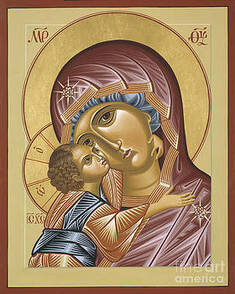 grace is another name for God's beauty grace is another name for God's beauty A way to learn to see beauty (as God does) is to spend time in prayer so that we can grow in understanding of who we are as those made in God’s own image and likeness, and for growth in intimacy with Him through the gift of His grace. Simply put, grace is another name for God’s beauty which He delights in extending to us. A perfect example of how grace is connected to beauty is the Blessed Virgin Mary. Those to whom she has appeared always describe her as beautiful beyond description. This should not be a surprise because Mary is full of grace which means there is no room for sin in her immaculate heart; she is pure. Another example is that of the Beatitudes taught by Jesus. (Matthew 5: 1-12) We can see the root of the word ‘beauty’ in beatitude, we know that each of the beatitudes begins “Blessed are ….” and that the word ‘blessed’ can be translated as ‘happy’ or ‘holy;* so it would not be a stretch to replace the word ‘blessed’ with ‘beautiful’ during prayerful reflection. We would then read, “Beautiful are the poor in spirit, for theirs is the kingdom of heaven,” and so forth. Prayerfully reading the entire passage in this way can change our perception and therefore, our response to Jesus. The more we embrace this understanding of how God sees us and accept it as our own, the more beautiful our souls become, or rather, the holier we become. 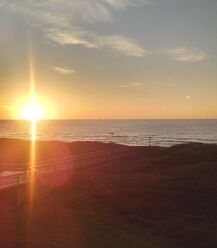 let our light shine let our light shine Coming in contact with our own beauty will elicit a response because beauty cannot stay hidden. Right after He gave the Beatitudes Jesus taught that we are not to hide our light under a bushel basket, but that we are to let our light shine. (Matthew 5:14-16) That light first affects our vision so that we see more clearly and do not stumble as readily. Only when we can see, is our light able to illuminate others. It is through this prayerful process that we will no longer have to close our eyes and sing, but we will see beauty with open eyes, and perhaps then we will sing for joy. A person who lives the beatitudes and has discovered their own interior beauty will now view others not by their physical characteristics, cognitive abilities, vocal eloquence, ethnicity, or socio-economic status, but instead they will see them as a child of God, beautiful to behold. This is not to say that we delude ourselves into not seeing evil (which is truly ugly), or that we deny the presence of pain and suffering. Rather, it is that we will learn to see with God’s eyes and to not be afraid of offering service, love, and mercy, especially to those who are outcast, poor, strangers, or ill. 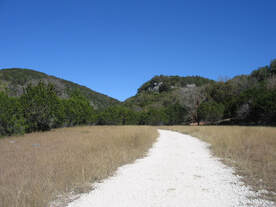 he saw beauty he saw beauty A story of St. Francis of Assisi illustrates this point. Even after his conversion he remained terrified of lepers, regarding them as so abhorrent that he was unable to even look upon them. One day as he was walking he saw a leper approaching, and strongly repulsed, he considered crossing to the opposite side of the road to avoid the man. But somehow Francis continued on, praying to conquer his fear. By the time he and the man met, Francis wholeheartedly embraced him and even kissed him on his sores. What changed within Francis was that he began to see this man as Christ, that is, as beautiful, thereby losing all his previous revulsion. It is important to note however, that what makes this truly moving is that St. Francis did not merely see past the exterior disfigurement and decay, but rather, he saw the man exactly as he was, and in this he saw beauty, loving him as a brother. 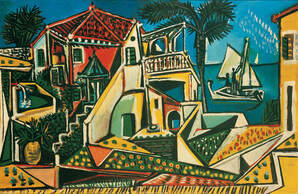 close our eyes and sing close our eyes and sing When we become familiar with beauty, the way we see will change. Our vision broadens, transfigures, and matures through the recognition of the presence of God whether it is within another person or in His beauty reflected in something as seemingly trivial as a stone. Prayer anywhere, at any time, will open our vision, but seeking Jesus in the quiet of our daily, private prayer time is the most effective way for grace to transform our hearts. And there is always the possibility that when we "close our eyes and sing," we will hear the Lord singing with us, too. May we learn how to "close our eyes and sing" so that we can learn to see beauty as God does! May we be like St. Francis, seeing people exactly as they are and loving them in their true beauty! And may we be inspired by grace to live the Beatitudes more fully! Let us meet in the Heart of Jesus! Peace! ©Michele L. Catanese * If you did not see it, a few months ago I wrote an entry in this blog that contained some insights on the Beatitudes and the translation of the word “blessed.” It was called “The Gospel Within the Gospels,” posted June, 2023. Here is the link: https://www.catanesesd.com/micheles-blog/the-gospel-within-the-gospels Images: 1. My photo; Brown Pelican in flight, Matagorda Bay, Matagorda, Texas. 2. Icon; Our Lady of Grace Vladimir, by Fr. William Hart McNichols. If you are interested in a copy in one of many mediums you can find it at fineartamerica.com/featured/our-lady-of-grace-vladimir-002-william-hart-mcnichols.html 3. My photo; Sunset over the Gulf of Mexico, Port Aransas, Texas 4. My photo; trail in Lost Maples Natural Area, Vanderpool, Texas. 5. Oil painting; Mediterranean Landscape, by Pablo Picasso, 1952. This painting hangs in the Albertina Museum, Vienna. Note: In compliance with GDPR rules, I wish to make it clear that I do not gather any information on any of my readers at any time. 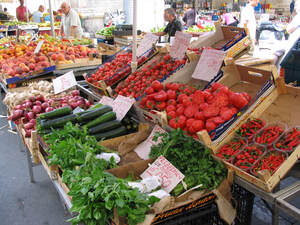 the bounty of the land the bounty of the land Marking important events with a celebration such as anniversaries and jubilees is a custom that many people enjoy. This practice has been part of every culture for millennia, including that of our faith communities. Scripture describes occasions that held special meaning, some prescribed by God and some which were a result of the people’s history. In the Old Testament (Leviticus 25:8-55) we read about the Jubilee years required by God. These years were considered as ‘hallowed’ (holy) and they originally involved releasing those in one’s service, returning to one’s family, returning land to its original owners, and resting from sowing or reaping. Jubilee was marked by special worship throughout the year to express gratitude to God for His many gifts, particularly the bounty of the land. While Jubilee years are celebrated quite differently today, it continues to be tradition in the Church to celebrate a Jubilee year periodically; the next one is in 2025. To prepare for it, Pope Francis has designated 2024 as a Year of Prayer, no doubt to encourage us to become more attuned to our relationship with God, to listen with greater expectation, and to open our hearts to greater love. 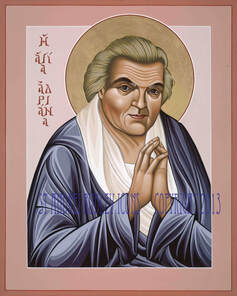 our relationhsip with God is the most important relationship we have our relationhsip with God is the most important relationship we have Prayer ought to be a part of our daily lives since our relationship with God is the most important relationship we have. However, there are times when prayer can become difficult insofar as our emotions, thoughts, and even our physical state might act as a source of distraction. Often we struggle to focus because we have many concerns that command our attention, but whatever it is, we must take care to avoid falling into the temptation of thinking that somehow we are a failure at prayer and give up altogether. Let me state this plainly: there is no such thing as a failure at prayer. Any attempt at spending time with God is good prayer. However, what can be an issue for many is how we prioritize prayer in the first place. Quite often we relegate it to a back seat because we think there are many other things that just have to be done. These things probably are important, but for perspective, a challenging, although imperative question to ask ourselves is whether we consider our daily life (and its commitments) a distraction to our prayer, or if we consider prayer a distraction to our daily life. If in honesty we realize it is the latter, this Year of Prayer can offer the opportunity to straighten our priorities and put God back where our hearts really do long for Him to be.  Speak, your servant is listening Speak, your servant is listening If we look to Scripture we will see that God always initiates the invitation for people to meet Him in prayer. A good example is that of the call of Samuel. Twice when God called out, “Samuel, Samuel!” he replied, “Here I am,” and thinking it was Eli who had called, he dutifully ran to his side. When this occurred a third time, Eli realized that it was God calling the boy and so he told Samuel that if he heard the voice again to say, “Speak, Lord, your servant is listening.” (1 Samuel 3:1-4) When God called yet again, Samuel was able to respond, becoming attentive and open to the message of the Lord. Not knowing better at the time, initially Samuel had misguided his response, but once he became aware it was God who called, he was able to communicate directly with Him, enabling him to become a great prophet in the service of God. *  He does call to our heart He does call to our heart Like Samuel, we need to make a similar response to God. Even though it is unlikely that we will hear God’s voice with our ears, He does call to our heart. When we respond, we consciously and intentionally enter into His presence where we will come to know Him more intimately, also receiving the graces He offers to help with handling the many challenges of daily life. Many of the Saints related their insights into the importance of prayer; St. Pope John XXIII expressed it beautifully when he explained why he arose daily at 4:30 AM to pray when he had such full, difficult days. His stated that without this prayer time, it would be impossible for him to handle his packed schedule. He said that the busier he was, the more he needed the prayer. And St. Padre Pio once advised one of his spiritual daughters saying, “You should never give your spirit to your work or to other actions so intensely that you end up losing the presence of God.” ** Both of these saints offer reminders that we need to be regular in our prayer so that our focus is on God who will give all we need to help us remain strong. And what a gift it is that every day our dearest, most faithful Friend, the one who knows us best and loves us the most, is waiting to spend time with us. 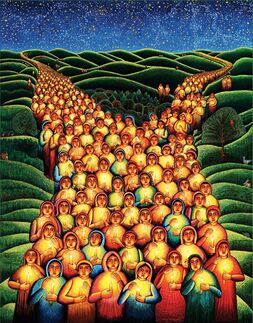 our hearts should celebrate our hearts should celebrate This year is an excellent time to prepare ourselves for the Jubilee Year of 2025. The emphasis on prayer offers an opportunity to deepen our relationship with the Lord, no matter what our habits may be presently. It can help with our identity as a community when we come together as one to worship, and it can enliven our works of mercy. Clearly, what we attend to now can become more than just a lifelong ‘habit:’ it can open us to a more intimate relationship with God that will come to complete fruition when we meet Him face to face in Heaven one day. Indeed, our hearts should celebrate. May we commit to a deeper, more intimate life of prayer! May we come to recognize the ‘voice’ of the Lord and respond to Him! May we come to know the love of the Lord more fully! And may we, filled with the graces received in prayer, grow in holiness as a response of love to the Lord! Let us meet in the Heart of Jesus! Peace! ©Michele L. Catanese * Other examples of God calling, a response being made, and God giving a mission: When He commanded Abraham to take Isaac up the mountain for sacrifice God called out, “Abraham!” and Abraham replied, “Here am I.” (Genesis 22:1) Later, when God came to Jacob in a dream He called, “Jacob!” Jacob replied, “Here I am!” (Genesis 31:11). In the Book of Exodus God called out from the burning bush, “Moses, Moses!” and Moses replied, “Here am I.” (Exodus 3:4) This ‘formula’ also appears in the New Testament when Ananias was by God sent to baptize Paul. God called, “’Ananias!’ And he said, ‘Here I am, Lord.’” (Acts 9:10) **From a letter of St. Padre Pio to Raffaelina Cerase, one of his spiritual daughters, December 17th, 1914. Images: 1. Photo taken by my husband; the bounty of the land found in an open air market in Catania, Sicily, Italy. 2. Icon; The Servant of God, Adrienne von Speyr by Fr. William Hart McNichols. Adrienne was a Swiss mystic. One of her books is called The World of Prayer. Another of her books was the result of mystical prayer during which she dictated what she witnessed to her spiritual director, the great theologian Hans Urs von Balthasar. This book is called The Book of All Saints. You can find this icon at https://fineartamerica.com/featured/the-servant-of-god-adrienne-von-speyr-068-william-hart-mcnichols.html 3. Painting; The Voice of the Lord, by James Tissot. This painting depicts young Samuel after he said, "Speak, your servant is listening." 4. My photo; the mountains, taken from around Silverthorne, Colorado. 5. Painting; Festival of Lights, by John Swanson. (1938-2021) Note: In compliance with GDPR rules, I wish to make it clear that I do not gather any information on any of my readers at any time.  to be observant to be observant Something that gives me delight is when I discover an unfamiliar word while reading that impels me to go to the dictionary in search of its meaning. Some of these words are short, others are of the ‘dollar-and-a-half’ variety, but all of them fascinate me (and often beg to be used). One such word came up recently, and after looking it up I wrote the word and definition on a slip of paper, captivated by it. What grabbed my attention was that the meaning and concept behind this word lent itself to the spiritual life, even though in all likelihood it is not ordinarily used this way. The word is perspicacious an adjective which means “having keen mental perception and understanding.” As I have reflected upon it, the thought that keeps returning is that being perspicacious would require one to be observant. Spiritually, to become perspicacious would be to have developed the gift of noticing and listening carefully, reflecting upon that which was seen/heard in order to understand more deeply. Jesus encouraged this practice; on more than one occasion He used the phrase, “he who has ears to hear, let him hear.” (Matthew 11:15; also Mark 4:9, 23).* He also taught that His followers are to be hearers and doers of the word. If we do not hear in the way of openness and reflection, we simply cannot do since we would have no idea what it is we are called to or that a response is even possible. The more we learn to hear in this way, the more our perception and understanding will grow and the more we will be able to make a response to Jesus, the Word made flesh. 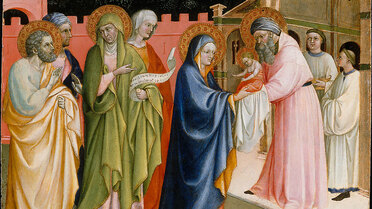 developing keen perception...the two prophets recognized Him developing keen perception...the two prophets recognized Him In the just completed Christmas season we welcomed Jesus as God-With-Us; we celebrated because the Son of God took on flesh and made His dwelling among us. We were invited to reflect upon those who recognized Him, some with the help of angels or a star, and others who recognized without being told. Two of the best examples to which we can apply the word perspicacious were Simeon and Anna. Independently of one another they prayed for decades, hearing God’s word within their hearts, developing 'keen perception' such that when the infant Jesus was carried into the Temple in the arms of His mother, the two prophets recognized Him. God had told Simeon that he would not die until after the messiah came. God did not tell him when this would take place, yet Simeon knew who Jesus was when he saw Him. For decades Anna prayed and fasted in the Temple, learning to listen and then respond to the word she must have heard deep within her heart. Indeed, they both had developed keen mental perception and understanding such that they could make a fitting response.** 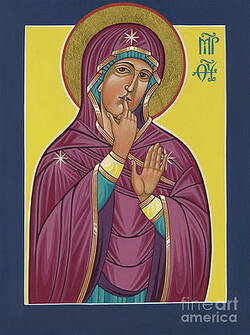 she understood with her heart she understood with her heart The Gospel proclaimed during the Christmas Day Mass contained the sublime words of St. John: “In the beginning was the Word, and the Word was with God, and the Word was God.”(John 1:1) This statement contains mystery, but meditating upon those words can inspire deeper spiritual understanding of the Word who has always existed and of the eternal plan of God to ‘bend low’ so as to enter our world. As we enter into the season called Ordinary Time all of the Scriptures and the prayers of the liturgy continue to invite us into greater observance, reflectively praying about who our Lord is, what He taught His disciples, and what He wants to say to us now. If we desire to hear and respond, we can observe Mary, the mother of Jesus; the reason she could respond to God was not because she always understood with her mind, but that she understood with her heart as a result of spending her entire life immersed in prayerful pondering. Before Jesus uttered a word of His teaching she knew that only in hearing could she know how to respond, that is, to do. In truth, Jesus exemplified her when He said, “My mother and my brethren are those who hear the word of God and do it.” (Luke 8:21)  Jesus, the Son of God, is The Word Jesus, the Son of God, is The Word St. John stated that Jesus, the Son of God, is The Word.*** Everything Jesus said and did was a message God had (and still has) for His people, but John went deeper: he wants us to know that Jesus Himself is the message of God’s great love for His people. The words of John invite us to immerse ourselves in them so as to reflect, listen, and respond. If we are not sure how to respond, our prayer will open our hearts so the Word can ignite them with His love; that love will direct our response. As we enter into this year, a good practice would be to pray daily with the Gospels, perhaps with a couple of lines or an entire passage, first calling upon the Holy Spirit for assistance in hearing what God is saying. As we reflect on and with the Word, our perception of His Presence will increase and our hearts will lead us to respond fittingly. Immersing in the Word (Scripture) and in The Word (Jesus) will aid us in becoming spiritually perspicacious; that is, our mental perception as well as our perception of heart will increase and grow so that we will have the ears to hear and the heart to respond to His presence. There is no greater Word upon which to center our attention, nor is there one more captivating. 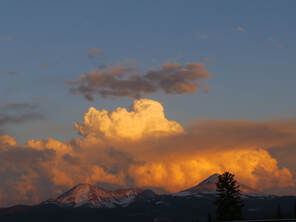 may the Word ignite our hearts may the Word ignite our hearts May we pray for the gift of becoming perspicacious so we can become bearers of The Word to a world so much in need! May we be inspired to make a commitment to growing in relationship with Jesus so as to observe and respond to His call! And may the Word ignite our hearts with His love and direct our response in small and great ways! Let us meet in the Heart of the Word! Peace! ©Michele L. Catanese Note: The Bible translation I have used throughout this post is the RSVCE (Revised Standard Version, Catholic Edition)  ...the better we understand through the power of grace ...the better we understand through the power of grace * There are numerous references made by Jesus in which He said “he who has ears to hear;” all are made with the implication that in listening/observing and discerning through reflection we will come to realize the insights Jesus is attempting to teach. This means we need to spend time in prayer and reflection so that our understanding opens. The more time we spend in prayer, the better we understand through the power of grace. I think this explanation by Jesus explains it best: “… This is why I speak to them in parables, because seeing they do not see, and hearing they do not hear, nor do they understand. With them indeed is fulfilled the prophecy of Isaiah which says: ‘You shall indeed hear but never understand, and you shall indeed see but never perceive. For this people's heart has grown dull, and their ears are heavy of hearing, and their eyes they have closed, lest they should perceive with their eyes, and hear with their ears, and understand with their heart, and turn, for me to heal them.’ But blessed are your eyes, for they see, and your ears, for they hear. Truly, I say to you, many prophets and righteous men longed to see what you see, and did not see it, and to hear what you hear, and did not hear it.” (Matthew 13:10-17) ** We could also say Elizabeth was perspicacious in that she recognized Mary as carrying the Son of God within her womb at the Visitation. And you could say this about her baby, too: the future Baptizer leapt when he heard Mary’s greeting! *** This first sentence from St. John is packed with ‘heavy duty’ theological meaning. In the Greek, Logos is the translation of Word in reference to the Son of God who has come into the world, that is, Jesus. While difficult to fully translate from the Greek, the theological concept indicates that the Word has no beginning or end, and simply has always existed. This is because He (the Son) is God who is eternal with no beginning or end; hence the Word (the Son) has always existed with the Father and is one with the Father. (God is Three Persons and yet One inseparable Godhead.) Images: 1. My photo; dewdrops on fern, taken at Lost Maples State Natural Area, Vanderpool, TX. 2. Painting; Presentation in the Temple, by Alvaro Pirez, (Metropolitan Museum of Art). 3. Icon, Our Lady of Silence by Fr. William Hart McNichols. You can find this at https://fineartamerica.com/featured/our-lady-of-silence-william-hart-mcnichols.html 4. My photo; Holy Bible. 5. My photo; sunset over the Mountains, near Silverthorne, Colorado. 6. My photo of a diamond painting: Mary at Prayer. This was a gift from a dear friend who made it for me. I love that Mary seems to be prayerfully pondering. Note: In compliance with GDPR rules, I wish to make it clear that I do not gather any information on any of my readers at any time.  the presence of Jesus Emmanuel the presence of Jesus Emmanuel Christmas has arrived with many beautiful hymns and carols, completed crèche scenes, and the knowledge that unlike what the culture tries to say, it is a season that is just beginning, not ending. Hopefully, we were able to immerse in Advent without bypassing it in an attempt to get to Christmas before its time. Now we can reflect upon that first Christmas when the Son of God arrived in a stable and rested in a manger, the events of which were virtually hidden from the world at large. His arrival was announced to the humble and lowly who were completely surprised, astounded by the song of angels. Most of us will not see or hear angels singing so it is important to ask ourselves how we have recognized His presence without those signs. Of course, we have heard the Gospels and know the ‘story,’ but after the Feast of the Nativity the challenge will be that of continuing to recognize the presence of Jesus Emmanuel. This thought brings to mind a 14th century Christmas greeting: “Thou shalt know Him when He comes not by any din of drums nor by the vantage of His airs nor be anything He wears, neither His crown nor His gown. For His Coming known shalt be By the Holy Harmony His Presence makes in thee!”  the holy harmony of our newborn Lord the holy harmony of our newborn Lord As we reflect upon the coming of Jesus, it is important to sit at the foot of the manger in adoration, gratitude, wonder, and awe. In that contemplation we can immerse in His presence, drinking in the holy harmony of our newborn Lord. In our prayer we can observe the baby Jesus and therefore get to know Him with the desire that we will continue to recognize His presence. At the time of His birth there were many who seemed unfamiliar with the prophecies or did not regard them as truth.* And later, even for those who did know the prophecies, Jesus still emerged and acted in enigmatic ways, challenging those who heard His words and witnessed His deeds. But who was it that saw, heard, and believed? It was the unlearned fishermen and shepherds, the poor, the humble, the outcast, and the alien. Why did they recognize Him? And why, for the most part, did those who should have known better not know Him? And which are we?  listening, learning and being open listening, learning and being open It is rather interesting, as well as shocking, that one who recognized the Messiah rather quickly was Herod the Tetrarch, a self-indulgent, arrogant, jealous, impulsive, scheming, and power obsessed man who fancied himself a king. He was disingenuous with everyone from the Romans he patronized to maintain power, to the Magi toward whom he acted as if with good intention. It is clear: Herod did recognize Jesus as revealed in his consultation of the chief priests and scribes concerning the prophecies in the Hebrew Scriptures. (Matthew 2:1-12; specifically Mt 2:3-6) That he was so threatened by Jesus’ kingship is evidenced in his unfathomable crime of ordering the murder of all the male children under the age of 2 in the vicinity of Bethlehem in an attempt to safeguard his own power. Herod's downfall, (and that of all those future adversaries that recognized the true idenity of Jesus on some level and subsequently felt threatened), was that he allowed his sense of recognition to be overpowered by his own needs, desires, and will, rather than listening, learning, and therefore being open to receiving God’s mercy and love.** 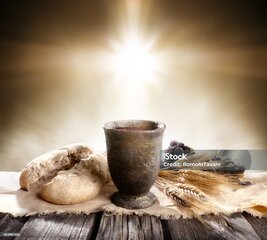 especially blessed are those who recognize Him without having to be told especially blessed are those who recognize Him without having to be told Of course, there were also those of faith who recognized Jesus readily. They were Elizabeth, Zechariah, and John the Baptist; the Magi and shepherds, and people like the prophets Simeon and Anna. Of these, especially blessed are those who recognized Him without having to be told, without a word being spoken to them about it, such as the Magi who had nothing but a star, or Anna and Simeon who prayed, believed, and as a result, recognized so as to welcome Him. For the most part, those who would accept Jesus were the humble, the broken, the lowly, the poor: they were the ones who hungered and thirsted for God and His kingdom. They would recognize Jesus because their hearts were open. This is not to say any of them were perfect, just as we are not perfect; but those who seek will recognize, and therefore, find. We can choose to be like them, recognizing Jesus in our brokenness, our wandering, and poverty (whether monetary or spiritual or both). We, too, can find Jesus if we learn humility, embrace simplicity of heart, and open ourselves to His will, trusting that His will is far better than our own because He is far wiser than we could ever be. We, too, can find Jesus if we hunger and thirst for Him over and above any ideology, political viewpoint, or opinion. We can learn to always find Him if we sit at the manger getting to know Him in the silence and the beauty of His arrival. 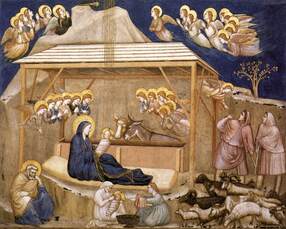 sit in the silence of the stable sit in the silence of the stable If we learn to recognize the presence of Jesus Emmanuel through the beauty of what God did on that holy night, what was brought to fruition through the humility of His handmaid Mary and the courage of His foster father, Joseph, we can find Him and will continue to find Him in our own day-to-day living through the Christmas season and long after it is over. So let us savor our time at the manger: if we sit in the silence of the stable during this season we will “know Him when He comes…. by the Holy Harmony His Presence makes in thee!” 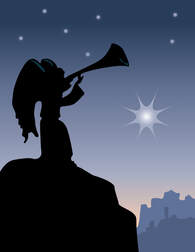 Glory to God in the Highest! Glory to God in the Highest! May we learn to recognize Jesus when He comes in simplicity as a Baby in a manger! May our hearts be open to recognizing Jesus in the humble of heart and poor of spirit! May we recognize Jesus by the Holy Harmony of His presence when we let Him take up residence within our hearts! Let us meet at the manger! Christmas Peace! © Michele L. Catanese * I am referring to the Pharisees and Sadducees, the latter of which did not even believe in a messiah-to-come and only accepted the Torah, (but not any of the other parts of the Hebrew Scriptures.) Ordinary people who were influenced by the teaching of the Pharisees awaited the Messiah with longing, and those influenced by the Sadducees, such as the priestly class, did not accept the prophets either, so they did not believe a messiah was to come. ** First, it must be said that Herod recognized without real understanding and without a shred of faith. Second, I have only written of Herod for the sake of this Christmas reflection, but anywhere there is evil, there is the recognition of who Jesus is (which is why these forces attack); most obviously, Scripture reveals that demons always recognize Him and some even call Him by name as the Son of God. Evildoers would also include the Pharisees and Sadducees when they wanted Jesus put to death, Judas who misunderstood and betrayed Him, Pilate who caved in to the demands of the crowd, and so forth. Images: 1. Image; The Nativity of Our Lord Jesus Christ by Fr. William Hart McNichols. You can find this at fineartamerica.com/featured/the-nativity-of-our-lord-jesus-christ-034-william-hart-mcnichols.html 2. Painting; The Adoration of the Shepherds (L'adoration des bergers) by James Tissot (1886-1894). 3. My photo; the moon over Stresa, Italy. 4. Photo; Communion Unleavened Bread Chalice of Wine by Romolo Tavani. 5. Fresco Painting; Nativity, by Giotto. (Assisi) 6. Painting; Tidings of Joy. (unknown) Note: In compliance with GDPR rules, I wish to make it clear that I do not gather any information on any of my readers at any time. |
Heart Speaks to Heart
|

 RSS Feed
RSS Feed
